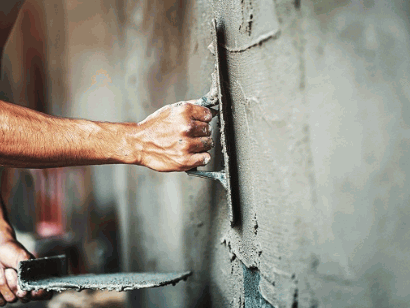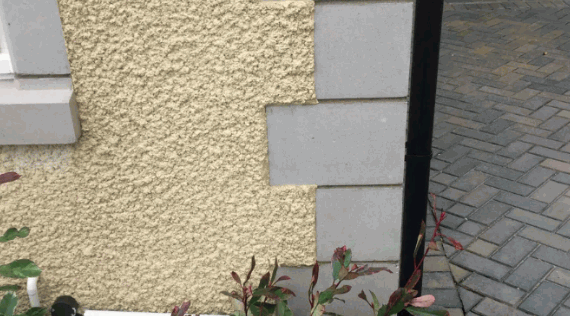
Tyrolean render is a popular wall covering choice for homeowners and builders, known for its unique textured finish and weather-resistant properties, enhancing the property's exterior.
This guide explores what Tyrolean render is, the rendering benefits it offers, and how it's applied to achieve that distinctive look, including comparisons with traditional render and modern rendering options.
It also discusses the various factors that influence its rendering cost, including rendering materials and labour costs, and provides insights on finding the right professional plasterers for your project.
Whether you're considering Tyrolean render for a small renovation or a large-scale build, this information will equip you with the knowledge you need, discussing render types like Silicone render and lime render, and how they compare.
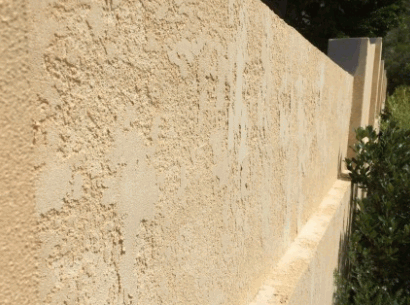
Table of Contents
Tyrolean render is a type of external rendering that is popular in the UK, known for its unique textured finish that adds character and durability to the property's exterior, comparable to Silicone render and Pebbledash.
This wall-covering technique involves applying a mixture of render materials, which are often cement-based, to create a decorative facade that enhances both aesthetics and protection against the elements.
Tyrolean render is often chosen for its ability to achieve a traditional or modern look, depending on the homeowner's preference, making it a versatile choice for various property styles, from traditional render properties to modern builds.
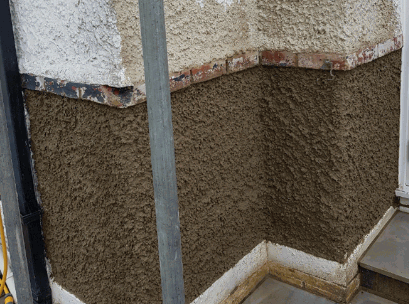
Using Tyrolean render offers numerous rendering benefits for homeowners looking to enhance their property's exterior and improve its overall performance. This external rendering option not only enhances kerb appeal, giving a stylish finish to the property but also contributes to energy efficiency by providing external wall insulation through its application.
By increasing the home's value and offering a protective layer against environmental elements, Tyrolean render is an excellent investment for long-term durability, similar to render types like Acrylic render and Cement render.
The application of Tyrolean render involves a precise process that ensures a durable and aesthetically pleasing finish, typically performed by professional plasterers who are skilled in various rendering techniques, including those used by companies.
The process begins with the preparation of the surface, which is crucial to achieving a strong bond between the render and the wall. Next, the render must be meticulously mixed to the right consistency before being applied using a specialised Tyrolean machine or texture roller, creating a distinctive finish that stands out, often necessitating scaffolding costs for high-level applications.
Look into: How To Repair Tyrolean Cracked Render
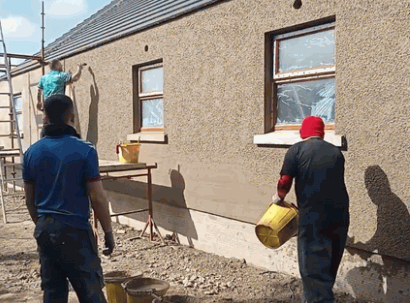
Surface preparation is a critical step when applying Tyrolean render, as it ensures that the render adheres properly and performs effectively over time. This involves cleaning the surface to remove any dust, debris, or loose materials, and conducting necessary patch repairs to fix any imperfections or damage that could compromise the integrity of the render application.
For optimal results, it is essential to follow a systematic approach, which typically includes the following steps:
By meticulously following these steps, one can achieve a clean, sound surface that not only supports the longevity of the render but also enhances its aesthetic appeal.
Mixing the render for Tyrolean application requires precision to achieve the correct consistency, ensuring that the rendering materials blend thoroughly for optimal performance. Achieving the ideal texture is crucial, as it not only impacts the aesthetic appeal but also the overall durability of the finish applied. Typically, a combination of cement, sand, and additives is used, and it is crucial to follow manufacturer guidelines to maintain the right ratios, which will affect the render's durability and finish.
The mixing process involves several important steps:
Consistently monitoring the mixture during this process is essential for creating a high-quality render.
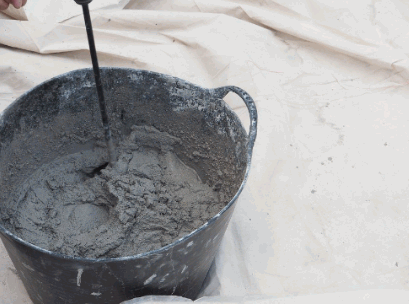
Applying Tyrolean render involves using a texture roller or a specialised machine, allowing for an even and consistent finish that highlights the render's unique characteristics. Professional plasterers typically execute this step, ensuring that the application is carried out smoothly while delivering the desired textured appearance that contributes to the property's aesthetic appeal.
To achieve the best results, the expertise of skilled craftsmen plays a crucial role. They employ various tools, such as trowels, spray machines, and texture applicators, which enhance both efficiency and precision. Ahead of application, they meticulously prepare the surface, ensuring it is clean and free from imperfections.
Ultimately, this careful methodology not only improves durability but also promotes energy efficiency, underscoring the comprehensive benefits of this popular render type.
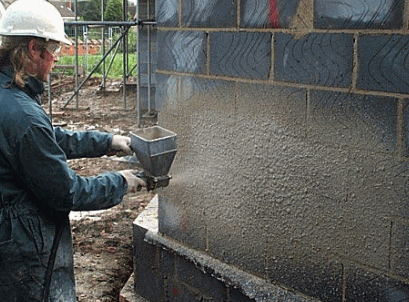
The cost of Tyrolean render can vary significantly based on several factors, making it essential for homeowners to understand what influences rendering costs, such as painting costs and scaffolding costs, before embarking on a project.
Key factors include:
Additionally, both labour costs and the quality of materials used can have a substantial impact on the final pricing, with potential waste disposal considerations influencing budgets further.
The size of the area being rendered is a primary factor that directly affects the overall rendering costs for Tyrolean render. Larger areas require more materials and extended labour time, which can lead to higher pricing when calculating the total cost of the project, often involving companies like K Rend and Parex for material supplies.
When assessing the relationship between square metreage and total expenses, it's crucial to consider how material and labour requirements scale. Specifically, as the area increases, so do the quantities of cement, sand, and other necessary elements, which can significantly affect budget constraints. In addition, longer rendering jobs generally means that skilled tradespeople spend more time on-site, leading to higher labour charges.
Understanding these dynamics helps in planning ahead and ensuring that financial forecasts accurately represent the expected costs associated with Tyrolean render projects.
The type of property also plays a significant role in determining the cost of applying Tyrolean render, as various property styles may require different approaches and materials. Traditional render properties may need more extensive work to comply with regulations, while modern properties might have specific insulation requirements that impact the final rendering costs.
When evaluating the overall expenses associated with rendering, it is crucial to consider the property style and its unique requirements. For instance,
As a result, the selection of materials also varies, with traditional properties using lime-based options for breathability and modern builds opting for more energy-efficient synthetic alternatives. Ultimately, understanding these nuances can lead to more accurate budgeting and satisfaction with the final aesthetic.
The condition of the surface to be rendered is a crucial factor affecting the overall rendering costs of Tyrolean render, as any necessary patch repair or preparation can increase labour and material expenses. A properly prepared surface minimises additional costs and helps achieve a more effective application, aligning with building regulations and ensuring long-term effectiveness.
Ensuring that the property exterior is free from moisture, dirt, and irregularities is vital for a successful render application.
When the quality of the underlying structure is compromised, such as through cracks or uneven areas, not only does the initial rendering process for rendered walls become more complex, but the longevity of the finish is also at risk.
Ultimately, a well-prepared surface ensures adherence and durability, highlighting how the cost of proper preparation significantly outweighs the expenses associated with repairs later on, enhancing the home value.
Labour costs are another significant component that influences the overall cost of Tyrolean render application, as hiring professional plasterers with expertise typically comes at a premium. Considering render options like monocouche render or lime render can also impact costs. The complexity of the project and the skill level required can elevate these costs substantially, especially for intricate designs or large areas.
The reliance on skilled professionals ensures the longevity and aesthetic appeal of the rendering, making it a worthwhile investment in the long run. When comparing options, including silicone render and acrylic render, it is essential to consider the value that qualified tradespeople bring, as they can effectively navigate challenges that may arise during the project.
In essence, while labour may contribute significantly to the total rendering expense, hiring capable individuals is crucial for achieving the desired outcome, underscoring the adage that you get what you pay for.
The quality of materials used in Tyrolean render applications significantly affects rendering costs, as higher-quality materials from brands like Weber, Parex, and JUB typically demand a higher price but offer better durability and performance.
Investing in quality rendering materials can lead to long-lasting results and reduced maintenance over time.
When considering various options, it’s crucial to recognise that cheaper materials might lower initial costs but can result in higher expenses down the line due to frequent repairs and replacements. Durability becomes a key factor in evaluating the overall long-term investment.
The performance characteristics of these materials, including their resistance to environmental stresses and aesthetic appeal, play a vital role in ensuring satisfactory outcomes.
Ultimately, a careful balance between price and performance will yield the most satisfactory results for any Tyrolean render project.
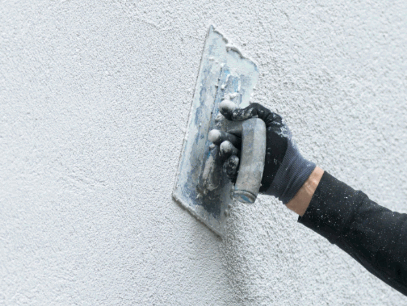
The average cost of applying Tyrolean render can vary based on several factors, but typically ranges between £30 and £60 per square metre, depending on the type of property and the size of the area.
Homeowners should be prepared for additional expenses related to preparation, equipment, and labour when budgeting for a Tyrolean render project.
The cost per square metre for Tyrolean render is a key metric homeowner should consider, as it provides a basis for estimating total expenses based on the size of their property. As mentioned earlier, this price can range from £30 to £60, influenced by the factors discussed previously.
Understanding this cost is essential because it allows property owners to forecast their budgets accurately. By calculating the total expenses associated with Tyrolean rendering, individuals can make informed decisions and adjust their plans accordingly.
By grasping this cost per square metre, homeowners can proactively manage their renovation budgets and avoid unpleasant surprises during the project.
When considering the application of Tyrolean render on a small property, homeowners can expect average costs ranging from £1,200 to £2,500, depending on the specific dimensions and surface conditions. Additional expenses for preparation and potential patch repairs should also be factored into the overall budget.
To provide a clearer understanding of how these expenses might add up, it is helpful to look at the breakdown of costs involved.
Altogether, when homeowners factor in all these elements, it is possible to reach a total investment of £1,800 to £4,100, emphasising the importance of budgeting accordingly.
Ultimately, the investment in Tyrolean render can not only enhance the aesthetic appeal of a property but also increase its value over time.
For medium properties, the application of Tyrolean render can typically cost between £2,500 and £4,500, with variations based on size and any existing surface conditions that may need addressing. Homeowners should account for these factors when budgeting for their rendering project.
Plus the basic costs, factors such as preparation work, the type of finish desired, and accessibility can also play a critical role in determining the final price.
To ensure a smooth rendering project, it is advisable to obtain multiple quotes from qualified professionals, which can help in identifying the best offer that meets both budget and quality expectations.
For larger properties, the costs associated with applying Tyrolean render may range from £4,500 to £10,000 or more, depending on the size, quality of materials, and surface preparation required. This significant investment is often justified by the enhanced curb appeal and property value it adds in the long term.
When considering a project of this magnitude, it is crucial to understand the intricacies involved. The total cost can be influenced by factors such as:
As size increases, the need for specialised equipment and skilled labour also arises, potentially leading to greater expenses. Homeowners should be prepared for variations in costs that arise from market rates and regional differences.
By investing wisely, a larger property can truly benefit from the aesthetic and financial advantages that high-quality Tyrolean render offers.
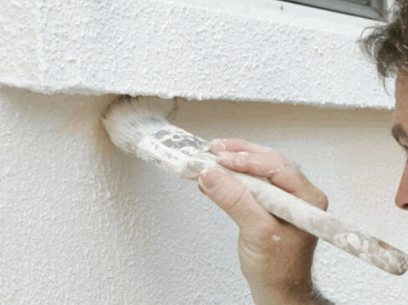
Finding the right contractor for Tyrolean render application is essential to ensure quality workmanship and successful project completion, requiring homeowners to undertake a careful selection process.
Start by researching potential professional plasterers in your area and gathering multiple quotes to compare prices and services offered, while also checking for relevant experience and qualifications.
Researching contractors and gathering multiple quotes is a critical first step in finding the right professional for Tyrolean render application, as it allows homeowners to compare services, pricing, and expertise. Consider reaching out to experts. This initial effort can ultimately lead to better decision-making and cost-effectiveness.
Exploring a variety of options helps homeowners identify those who specialise in this type of finish, as not all contractors possess the same level of experience. To streamline the process, consider the following strategies:
By following these steps, you'll be well-equipped to select a contractor who meets your specific requirements and expectations.
It is essential to check for experience and qualifications when selecting a contractor for Tyrolean render, Lime render, or Cement render application, as these factors significantly influence the quality of workmanship and the project outcome. Look for contractors who have a proven track record and relevant certifications in external rendering.
When evaluating potential contractors, consider the following crucial aspects:
Credentials such as industry-specific certifications and training programmes indicate a commitment to their craft. Ultimately, overseeing the selection of a well-qualified contractor is vital, as it directly correlates to the durability and aesthetic appeal of the finished render, ensuring long-lasting results that enhance the property’s value.
When hiring a contractor for Tyrolean render, Acrylic render, or Pebbledash, asking for references and reviewing their portfolio of past work is crucial in assessing their reliability and craftsmanship. This practice provides insights into the quality of their work and helps ensure that they meet the necessary standards for your project.
It allows potential clients to gauge the contractor's experience, especially in similar projects, thus making an informed choice. Obtaining a list of previous clients is a clever move; these contacts can share their firsthand experiences, offering valuable feedback on the contractor’s professionalism and reliability.
Therefore, by incorporating these strategies when seeking contractors, one significantly enhances the odds of securing a skilled and trustworthy professional, ensuring the success of the undertaking.
Considering the availability and communication style of potential contractors for Tyrolean render application is essential for ensuring a smooth collaboration throughout the project. Clear communication aids in understanding project timelines, expectations, and any potential issues that may arise.
In addition, the contractor's responsiveness plays a crucial role in mitigating misunderstandings. When evaluating candidates, potential clients should take into account not only their schedule but also how effectively they communicate updates.
A contractor who is prompt in replies, whether via email or phone, can significantly enhance the overall workflow. Establishing regular check-ins can foster a collaborative environment, allowing both parties to address concerns proactively.
Therefore, careful consideration and open dialogue are integral to achieving desired outcomes.
